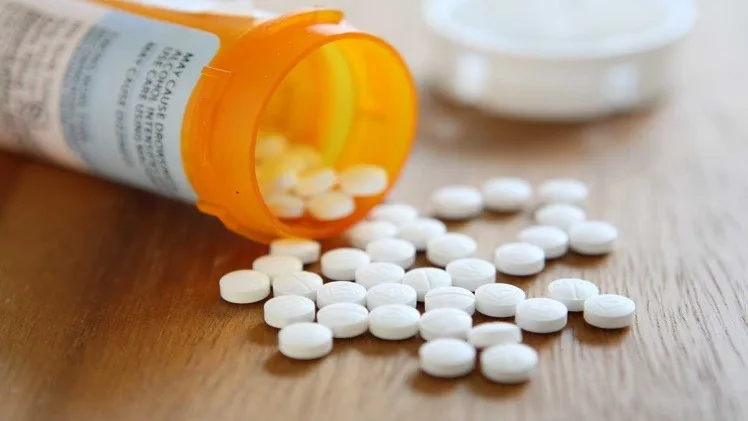People abuse Vyvanse by taking it in doses greater than prescribed, more often than prescribed, or without a prescription. While Vyvanse can be used effectively to treat mental health disorders like ADHD and BED, the rate of this type of drug abuse is increasing in the U.S. When Vyvanse is abused, consequences arise, such as addiction, cardiovascular issues, and psychosis.
Vyvanse can also bring about other mental health issues as it affects the chemicals in the brain that relate to behavior, impulse, and attention. As a prodrug, Vyvanse is dormant until it is metabolized into dextroamphetamine, which is the active form of the drug it turns into.
Since the drug is metabolized slowly, the medication has a longer-lasting effect, specifically an effect of up to twelve hours, depending on the individual. Some of the effects are influenced by factors such as weight, age, and the condition the drug is intended to treat.
The person-specific factors determine the dosages prescribed to produce the intended effects for treatment as they relate to the condition being treated. Drug abuse is a serious concern as it is, and for controlled substances, the risk of dependency and addiction adds immensely to these severe concerns. With the understanding that the abuse of Vyvanse is a serious issue, continue reading to learn more about the length of time it stays in your system and the additional information you should know about the Vyvanse half-life and the risks of abusing this controlled substance.
What is the Vyvanse half-life?
The “high” achieved by Vyvanse abuse results from abusing the medication’s ability to increase dopamine and norepinephrine. Just as dosage specifics are based on the individual, the length of time that it stays in one’s system also varies. Numerous factors influence the drug’s half-life, including age, weight, organ function, medical history, etc.
On average, the Vyvanse half-life is approximately 10-12 hours. Half-life refers to the amount of time it takes for half of the drug to leave the body, based on the dose you take. For example, if an individual has been prescribed 40 mg of Vyvanse, what this means is that in about 10-12 hours, this person will have eliminated half of that dose (which equates to 20 mg in this case) from their body.
Are there exceptions to these timeframes?
Although the Vyvanse half-life estimates the duration of the drug’s effects, it is possible for the effects of Vyvanse to last beyond its half-life. This is because, as a prodrug, it stays inactive until it is metabolized to its active form (as previously discussed). With this in mind, the Vyvanse half-life is not necessarily an accurate estimation; in these cases, it is possible for the effects to remain for a maximum of 14 hours in some people until it’s been completely eliminated by the body.
How does Vyvanse work in the brain?
The drug functions by raising neurotransmitters which, in turn, can improve focus, regulate attention, and raise motivation and pleasure. Concentration and mood are also enhanced with the correct use of the drug. Additional factors influence the Vyvanse half-life and how long Vyvanse stays in the body. The amount of regular exercise the individual receives influences the estimated vyvanse half life as well as the body’s hydration level and one’s tolerance to the drug.
What are some of the dangers of Vyvanse abuse?
Vyvanse is a stimulant, rendering that it places a high risk for the user in terms of experiencing adverse side effects, especially when taken incorrectly. When abused, this drug can cause serious health complications, including seizures, heart issues, and hallucinations.
Note: There are effective treatments and lifestyle changes you can pursue to ensure that you move beyond the Vyvanse half-life and complete detoxification from the drug to begin a successful recovery.
Personal factors increase adverse effects.
Specific dangers for older individuals abusing Vyvanse include drug dependency or addiction, as the drug is metabolized at a much slower rate than it is in younger counterparts. The estimated vyvanse half-life is likely to be longer for older individuals. For these individuals, the drug may stay in the system for a greater duration of time, regardless of the pre-established, estimated vyvanse half-life. The same is true for those at higher weights than their counterparts and those with impaired kidneys or liver function.
What are some signs of Vyvanse addiction?
As a prescription used to treat ADHD and BED, the active ingredient (lisdexamfetamine) is a stimulant that has the potential to lead to addiction. As a stimulant, Vyvanse alters brain chemistry and can therefore cause addiction. Signs of addiction include intense drug cravings, tolerance, the need to take more of the drug to achieve the desired effects, and symptoms of withdrawal that may or may not begin at the Vyvanse half-life point, i.e. (fatigue, insomnia, depression, etc.). Other signs of addiction include social withdrawal and obsession with drug use. Physical signs of addiction include weight loss, raised blood pressure and heart rate, etc.
Why is Vyvanse addictive?
As a prescribed medication, Vyvanse is provided in capsule form and is to be taken once every morning or as otherwise instructed by the healthcare provider. Part of the reason for the strictness of following a time-sensitive medication routine for Vyvanse is that it is a controlled substance, which means it poses a risk for abuse and dependence. Another reason for the rigidity of taking the medication early in the morning is that it can bring on insomnia and other sleep disturbances in some individuals. For these reasons, taking the drug as prescribed is the best way to safeguard oneself against the possibility of accidental misuse and the severe adverse side effects that can result from it.
Free yourself from drug addiction.
If you are struggling with drug addiction, get help right away. The sooner you get the help you need, the sooner you can regain your life, free of drug dependency. Don’t let addiction stop you from living your best life.



